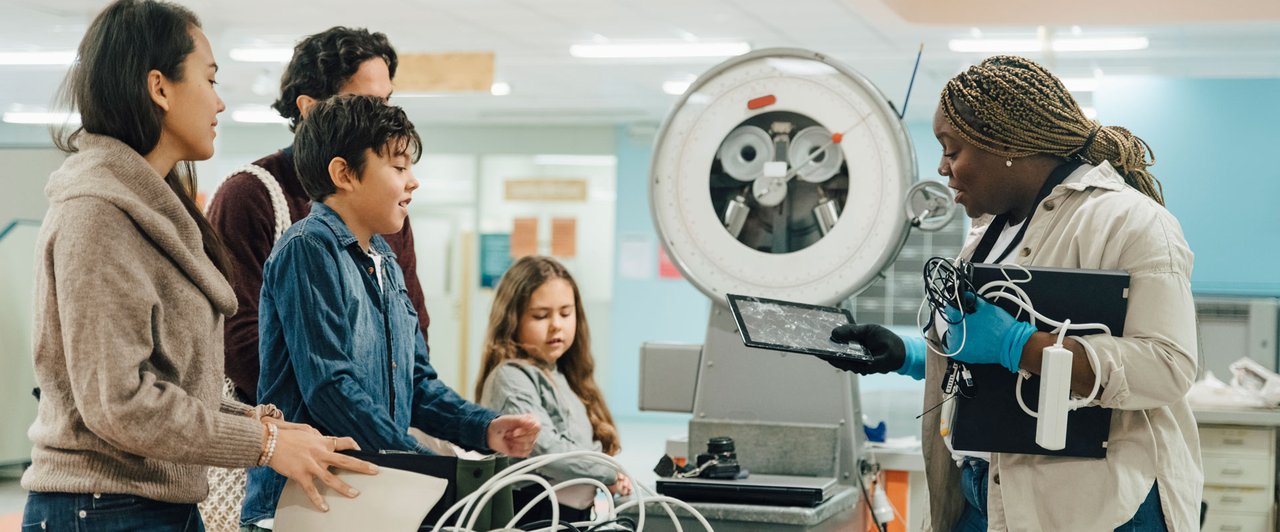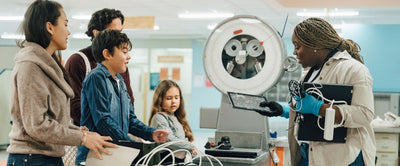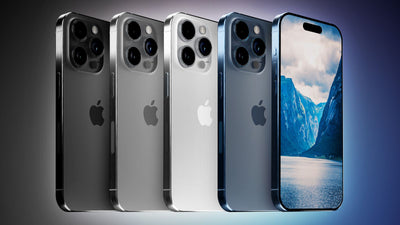One year of e-waste, from discarded devices, contains $57bn worth of raw materials - which could be re-used or recycled if companies improve product design.
By Jessica Rawnsley, Financial Times
Original article link: https://channels.ft.com/en/rethink/is-a-sustainable-electronics-industry-possible/
Over the past decade, tech has become an indispensable companion in our lives. A growing number of devices answer our every daily need. But all of these — from smart watches, to wireless headphones, virtual assistants and tablets — have a shelf life. And, once discarded, they linger on in e-waste graveyards, leaching toxins into the soil, or gathering dust in drawers. All of the resources extracted, transported and transformed in their manufacture — the rare minerals, plastics, chemicals – are lost. And all of the energy used to create them is lost to the ever-warming atmosphere.
In 2020, a UN Global E-waste Monitor report found a whopping 53.6mn tonnes of e-waste had been dumped worldwide in 2019. That’s the same weight as 4,500 Eiffel towers. Or heavier than the combined weight of all commercial planes ever made. And that’s just one year of e-waste. Within that horde of washing machines and televisions and toasters was some $57bn worth of raw materials – greater than the GDP of many nations. Only 17.4 per cent of these materials were recycled. The majority were incinerated or jettisoned in landfill.
Demand has not peaked. Some 1.43bn phones are sold annually. E-commerce sales continue to surge worldwide. As a result, e-waste is one of the fastest growing waste streams in the world. The UN forecasts that, on current trends, yearly e-waste generation will balloon to 74.7mn tonnes by 2030. The report called for a global reboot and a new vision for e-waste rooted in the ‘circular economy’ of reuse and recycling. But is a sustainable electronics industry possible?

Broken smartphones, credit Smith Collection/Gado/Getty Images
A number of fledgling companies and tech giants have been grappling with that question. Organisations have sprung up to coordinate their efforts.
The Circular Electronics Partnership (CEP) was established in 2021 to unite experts, business leaders and global organisations in co-designing solutions for a ‘circular’ electronics industry. Alongside 40 companies, CEP produced a roadmap identifying the core barriers to sustainability faced by the industry and the pathways towards circularity.
“These 40 barriers are something all companies run into and because they are all so broad, they need collective action to be overcome,” says Carolien Van Brunschot, CEP’s manager. “You don’t build a circular economy yourself. It’s a larger system, so you need to collaborate with your industry peers.”
While recycling is often cited as the answer to e-waste, change must begin much earlier on in the value chain. Referring to the 17 per cent of e-waste that is recycled, Brunschot asks: “What does recycled mean? Does it mean that it goes into new electronics? Does it mean that all the materials are really separated to their molecular level? It misses the part on reused and refurbished… [Low recycling rates] are not a recycling issue but a full value chain issue”.
The starting point – and the first CEP pathway – is building circularity into product design. “Essentially, you want to keep things in the loop and in use for as long as possible,” says Brunschot.
This idea forms the backbone of Fairphone, a Dutch smartphone manufacturer and social enterprise focused on fair and recycled materials. “If you want to tackle the environmental impact, longevity becomes the focus area because most of the impact of a smartphone lies in its production phase,” explains Thea Kleinmagd, a circular material chains innovator at Fairphone. By some estimates, 75 per cent of a phone’s adverse environmental footprint lies in its production.
The company’s latest model, Fairphone 4, is modular: comprised of eight modules that can be easily repaired by customers, with guides and spare parts available on the website. “Repair has a very small carbon footprint,” says Kleinmagd. “If you design smart, in a way that [means] you can exchange modules that have a very low impact and keep the big module, the core, in life, then you’re gaining a lot of resources because you can use it for longer and it’s not ending up in recycling where you lose a lot of materials.”

Fairphone 4, credit Fairphone
But, right now, Kleinmagd says, repair is “not a given” as “it’s very expensive and often made quite difficult for users to get spare parts”.
In recent years, a campaign has been mounted over consumers’ right to repair electronic devices - rather than being forced to throw them away. Governments are beginning to take notice. Last year, the EU solidified this right in legislation. States in America are following suit. Apple, Samsung et al have started to offer guides and repair kits for some of their products.
It requires a shift in consumer behaviour, too; so-called ‘upgrade culture’ is incompatible with a circular economy. “It’s something that consumers also need to go through,” argues Brunschot. “It’s really a global societal mindset of using things for as long as you can. And, if you can’t anymore, then take it apart and see what else you could use it for. It’s about putting value in what you have rather than what you can buy.”
Tech companies including Apple and Dell have implemented schemes to incentivise customers to hand in old devices with the reward of store credit. Samsung’s ‘Upcycling at Home’ enables people to repurpose old Galaxy smartphones into devices such as baby monitors.

Daisy robot, credit Apple
Initiatives like Smartphones4Good give devices second and third homes. “Hoarding a used smartphone in the drawer?” asks its website. “You can now save our planet’s valuable resources, and give your phone a new life by sending it to us. We wipe all the remaining data off the phone, after which a female entrepreneur in Africa will be given a chance to lease it at an affordable price.”
And recycling innovations are improving what can be salvaged from expired tech. Apple’s Daisy robot can disassemble 200 phones an hour. Similarly, its Dave robot recovers rare earth magnets, tungsten and steel— while its Taz machine reclaims magnets from audio modules. In 2021, 20 percent of all materials in Apple products were recycled; the goal is 100 percent.

Daisy robot, credit Apple
The UN’S International Telecommunication Union (ITU) guides governments’ national policies on e-waste. These can include recycling benchmarks or current efforts to standardise global power adapters. “Compliance and enforcement are critical,” says Cosmas Zavazava, director of ITU’s Telecommunication Development Bureau. “It’s a work in progress. We have to educate, educate, educate.”
Some early signs are promising. Since 2014, the number of countries that have adopted a national e-waste policy, legislation, or regulation has increased from 61 to 78, and that number is still growing, according to an ITU report. In 2021, the global e-waste recycling market was already worth $3.6bn and it is now forecast to expand at a compound annual growth rate of 7.6 per cent to reach $7.3bn by 2030, based on data from Transparency Market Research.
“It’s not going to be an overnight shift,” Brunschot says. “We’re not going to wake up one day and say, oh, the circular economy is here. It’s a gradual shift. But it’s happening.”






